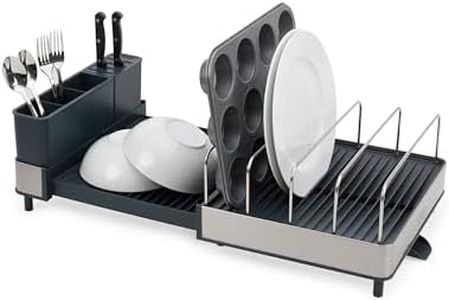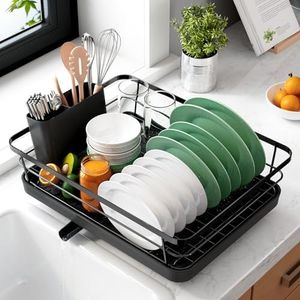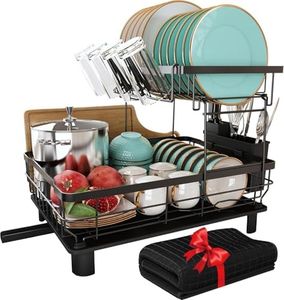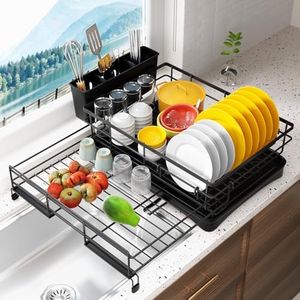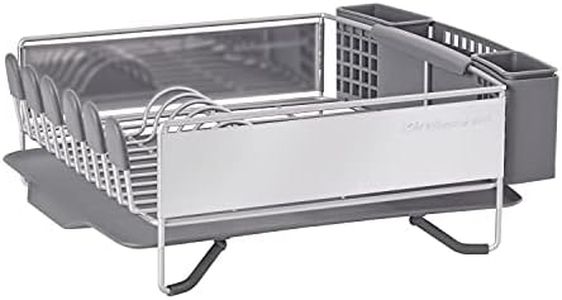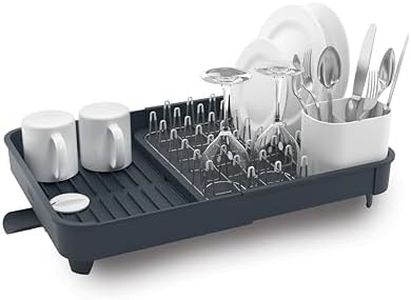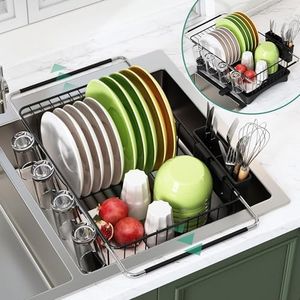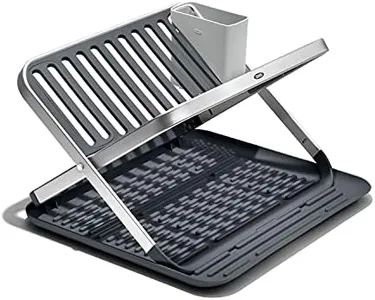We Use CookiesWe use cookies to enhance the security, performance,
functionality and for analytical and promotional activities. By continuing to browse this site you
are agreeing to our privacy policy
10 Best Dish Racks
From leading brands and best sellers available on the web.By clicking on a link to a third party's website, log data is shared with that third party.
Buying Guide for the Best Dish Racks
Choosing the right dish rack might seem simple, but since it’s a tool you’ll use daily, it’s worth spending a little time to find one that truly fits your kitchen and lifestyle. Think about how much you typically wash by hand, the size of your counter, and how important drying speed or organization is to you. The best dish rack is one that manages space efficiently, keeps your dishes secure while drying, and is easy to clean and maintain.Size and CapacitySize and capacity refer to how many dishes a rack can hold at one time and how much space it will take up on your countertop. It’s important because a rack that’s too small will not handle your daily load, while one that’s too big may take over your kitchen space. To figure out what works best for you, look at how many plates, bowls, glasses, and utensils you wash by hand in a typical day. Compact racks work well in small kitchens or for individuals; medium sizes suit couples or small families; larger racks are suitable for households that do lots of hand washing or have bigger kitchens.
MaterialThe material of a dish rack affects its durability, ease of cleaning, and appearance. Common options include plastic, stainless steel, and coated wire. Plastic racks are lightweight and generally less expensive, but may stain or warp over time. Stainless steel is strong, resists rust, and often looks sleek, but it needs to be wiped dry to prevent water spots. Coated wire racks have a plastic or rubber coating to protect dishes but may chip. Choose the material that aligns with how much maintenance you want and your kitchen’s style.
Drainage SystemThe drainage system is how water runs off from the dishes to keep your counter dry. This is important for hygiene and convenience. Some racks have a sloped base or a spout to guide water back into the sink, while others may need mat underneath or don’t have a drainage option at all. If your sink is close to where you’ll place the rack, a model with a draining spout is handy. If not, you might want a rack with a built-in tray to capture water, which you’ll empty periodically.
Utensil and Glass HoldersSpecial compartments for utensils, cups, and wine glasses help keep items organized and maximize drying space. Utensil holders prevent small items from getting lost or falling through. Wine glass racks or stemware holders are useful if you regularly wash delicate glasses by hand. Look for adjustable or removable holders if you have specific needs, or if you want flexibility to adapt the space for larger pots or odd-shaped items.
Ease of CleaningEase of cleaning relates to whether the rack has parts that are easy to wipe or disassemble, and if it resists mildew or mold. This matters because standing water and food flakes can quickly cause unpleasant smells and stains. Models with fewer nooks and crannies, removable trays, and dishwasher-safe parts are simpler to keep clean. If you’re busy or value convenience, look for features that minimize extra cleaning effort.
Foldability and StorageFoldability means whether the rack can collapse or be taken apart for easy storage when not in use. This is great if you need more counter space when the rack isn’t needed or if you only hand-wash occasionally. Non-folding, fixed racks are generally sturdier and offer more space, but if you’re short on room or like a tidy look, a foldable model could be the right fit.
